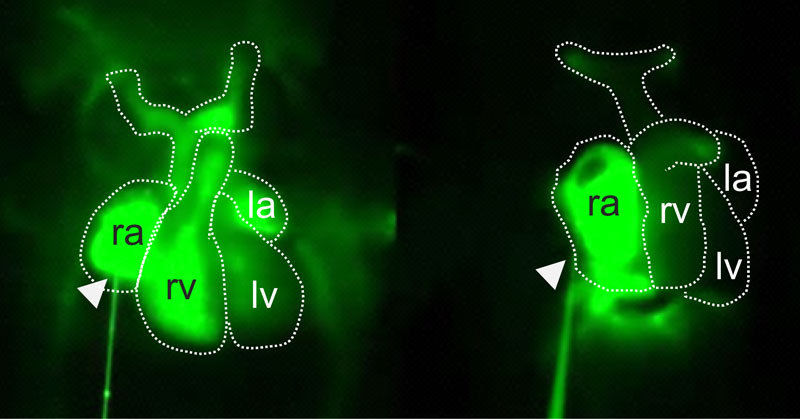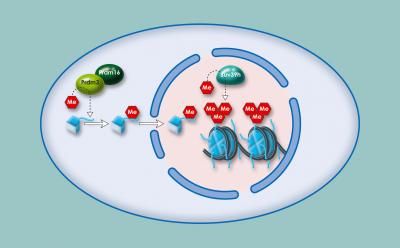Epigenetic control of cardiogenesis
Non-coding RNA is essential for normal embryonic cardiogenesis
Advertisement
Many different tissues and organs form from pluripotent stem cells during embryonic development. To date it had been known that these processes are controlled by transcription factors for specific tissues. Scientists from the Max Planck Institute for Molecular genetics in Berlin, in collaboration with colleagues at MIT and the Broad Institute in Boston, have now been able to demonstrate that RNA molecules, which do not act as templates for protein synthesis, participate in these processes as well. The scientists knocked down a gene for long non-coding RNA molecules (lncRNA) and thereby disrupted the development of the heart to an extent that was lethal to the embryos. Genesis of the ventral body wall was also impaired. It became apparent that the lncRNA participates in controlling transcription factors that themselves are responsible for controlling tissue- and organogenesis. The lncRNA itself thus acts as a modulating factor in these processes.

Defective cardiac function in mouse embryos at 12.5 days, Fendrr mutations (right) in comparison to normal embryos (left). la – left atrium, lv – left ventricle, ra – right atrium, rv – right ventricle.
© MPI für molekulare Genetik
RNA molecules more than 300 nucleotides long and not exhibiting any protein-coding read frames are denoted as long non-coding RNA. They are known to interact with histone-modifying protein complexes that control the activation state of genes (activatable, active, or repressed), as well as influencing the level of their activity. This occurs, for example, through the transfer of methyl groups to histones, the DNA-packaging proteins. Modifications to the histones such as these can be copied during cell division and thus promulgate the activation state of genes from cell to cell across several stages of differentiation.
Max Planck scientists led by Bernhard Herrmann have proven for the first time that lncRNAs may also be indispensable for embryonic development. This was previously known primarily for transcription factors. They discovered an lncRNA, termed Fendrr, which is specifically formed in the progenitor cells of the heart and ventral body wall. After knocking down Fendrr in a mouse, the heart and ventral body wall were malformed, which was lethal to the embryos. The malformations first arose, however, several days after Fendrr had already been knocked down in the progenitor cells. In the case of transcription factors, the malformations appear, in contrast, after their inactivation for cells in which the gene is normally active.
This delay between the expression of the Fendrr-RNA and the appearance of the malformation can be explained by the specific effect of this new class of regulators. They influence the epigenetic control of target genes, including important transcription factors, namely by binding to histone-modifying protein complexes. Thus, they influence the fate of the descendants of cells in which they themselves were only briefly active.
The scientists now hope to locate further lncRNAs that control cardiogenesis and additional processes of embryonic development in mammals, and shed light on the mechanism of how they operate. Fendrr is probably only one of many lncRNAs that participate in epigenetic control of regulators for tissue- and organogenesis.























































